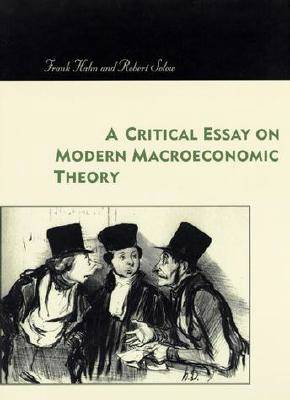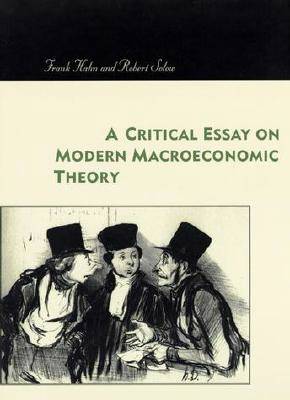
- Retrait gratuit dans votre magasin Club
- 7.000.000 titres dans notre catalogue
- Payer en toute sécurité
- Toujours un magasin près de chez vous
- Retrait gratuit dans votre magasin Club
- 7.000.0000 titres dans notre catalogue
- Payer en toute sécurité
- Toujours un magasin près de chez vous
Description
Macroeconomics began as the study of large-scale economic pathologies such as prolonged depression, mass unemployment, and persistent inflation. In the early 1980s, rational expectations and new classical economics dominated macroeconomic theory, with the result that such pathologies can hardly be discussed within the vocabulary of the theory. This essay evolved from the authors' profound disagreement with that trend. It demonstrates not only how the new classical view got macroeconomics wrong, but alsohow to go about doing macroeconomics the right way. Hahn and Solow argue that what was originally offered as a normative model based on perfect foresight and universal perfect competition--useful for predicting what an ideal, omniscient planner should do--has been almost casually transformed into a model for interpreting real macroeconomic behavior, leading to Panglossian economics that does not reflect actual experience. Following an explanation of microeconomic foundations, chapters introduce the basic elements for a better macro model. The model is simple, but combined with the appropriate model of the labor market it can say useful things about the fluctuation of employment, the correlation between wages and employment, and the role for corrective monetary policy.
Spécifications
Parties prenantes
- Auteur(s) :
- Editeur:
Contenu
- Nombre de pages :
- 208
- Langue:
- Anglais
Caractéristiques
- EAN:
- 9780262581547
- Date de parution :
- 21-08-97
- Format:
- Livre broché
- Format numérique:
- Trade paperback (VS)
- Dimensions :
- 152 mm x 227 mm
- Poids :
- 231 g

Les avis
Nous publions uniquement les avis qui respectent les conditions requises. Consultez nos conditions pour les avis.






